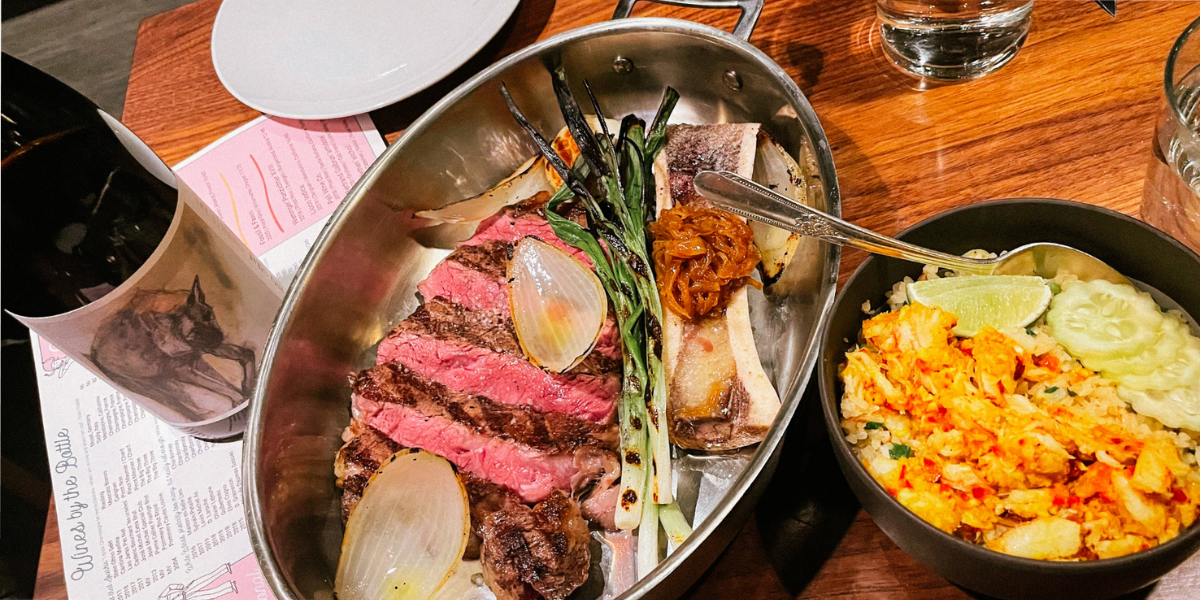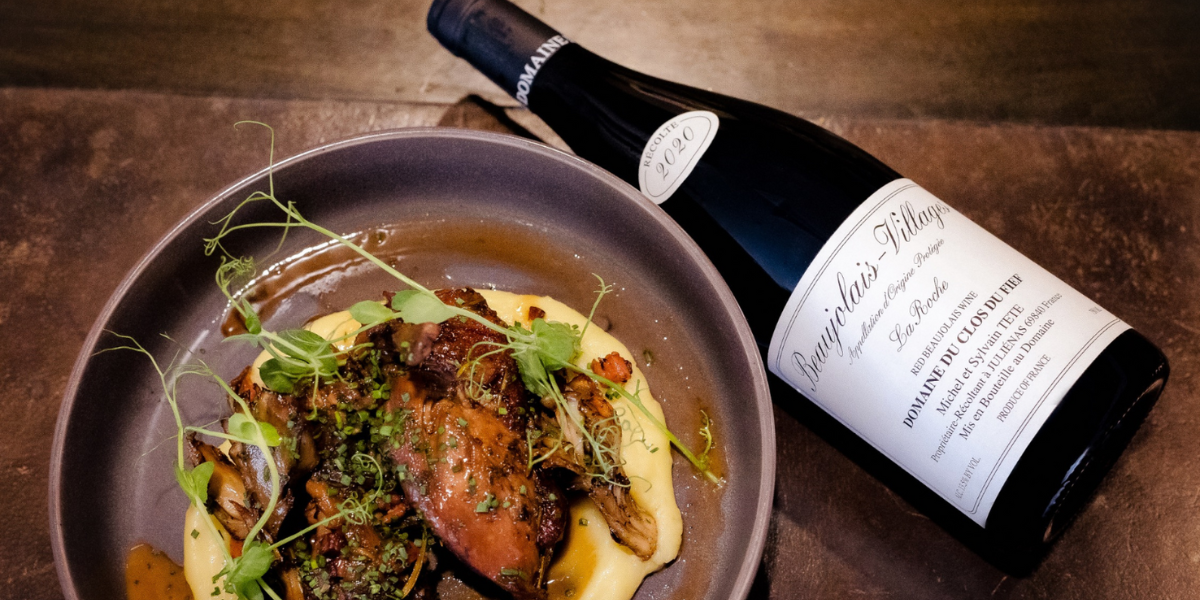Domaine du Clos du Fief ‘La Roche’ Beaujolais-Village at Avelina
Our three-part series on Tips from a Sommelier for Ordering Wine in Restaurants continues this week with part two. This section is all about considerations to take when it comes to pairing wine with food. Combining food and wine can elevate a dining experience and make it unforgettable. On their own, the food and wine have unique and beautiful flavors. When combined, a third flavor is created that doesn’t exist without both.
If you find yourself always ordering the same old thing or feeling lost regarding the wine list, get ready to expand your horizons. You may not know everything there is to know about wine but you do know what you like to eat! Go with what you know and use that to guide your wine selections. Before you know it, you’ll enhance your dining experiences in a whole new way. You might even impress your party a little!
Consider what you’re going to order for food.
It can be useful to make some decisions about what you plan to order for your meal before you choose a wine. After all, a successful wine pairing behaves like an ingredient in the meal versus a separate component of the experience.
The structure of the food should match the structure of the wine…for the most part.
You’ve likely heard a wine described as “light” or “full-bodied” in the past. These descriptors have to do with the intensity of the wine. To make it simple, think about how hungry you are and what kind of dish sounds good. If you’re having light appetizers, a salad, or a fish dish, you probably want to go with a wine that’s lighter in body and alcohol. If you’re going all out for that tomahawk steak, it might be time to roll out the big guns with a bold Syrah or Cabernet Sauvignon. With your meal in mind, half the decision-making on wine is done.
Pairings like the ones I mentioned above are considered “congruent,” meaning there are similarities in both the food and wine that tie them together. The alternative is to select a “contrasting” pairing. For example, the famous combination of champagne and fried chicken. The chicken is rich and crispy with a beautiful fat component. The champagne is high in acidity, which cuts through the grease and refreshes the palate. If you’re still not sure, resort back to my first tip in part one of this series and ask for help! If you know what you plan to order, your sommelier or server will be better able to assist you in choosing a wine to pair.

“What grows together, goes together.”
This pairing concept is fairly foolproof. Simply stated, flavors in traditional dishes from specific regions of the world tend to pair well with wines from the same area. Briny oysters pair beautifully with bright, high-acid whites like Muscadet, while a rack of lamb is delicious with Australian Shiraz.
If the wine calls for it, ask for a decanter.
A decanter is a great way to help a robust wine along its path to perfection. If you have a rich, robust meal that you plan to pair with an equally intense wine, a decanter is a welcome addition. When you’re dining in a restaurant, you don’t usually want to wait a couple of hours; some wines need to open up and show their best. If you’ve chosen an old or very intense, full-bodied red wine, a decanter can make all the difference in your enjoyment. Again, you can ask your server or sommelier if a decanter is recommended.
When in doubt, rosé it out!
If you’re dining with a group and everyone is ordering something different for their meal, a dry rosé can be an excellent option for the table. Rosé has fruit, acid, and even a little tannin structure, depending on your choice. It pairs beautifully with a massive range of dishes (you’ll always find it on my Thanksgiving table for this reason). Not to mention, it’s usually affordable and generally a crowd-pleaser.
Are you hungry yet? Consider spending some time playing around and applying these concepts to meals you enjoy at home. The more you taste, the more sense it will make! Check back next week for part three of this series, and enjoy some great food and wine in the meantime!

